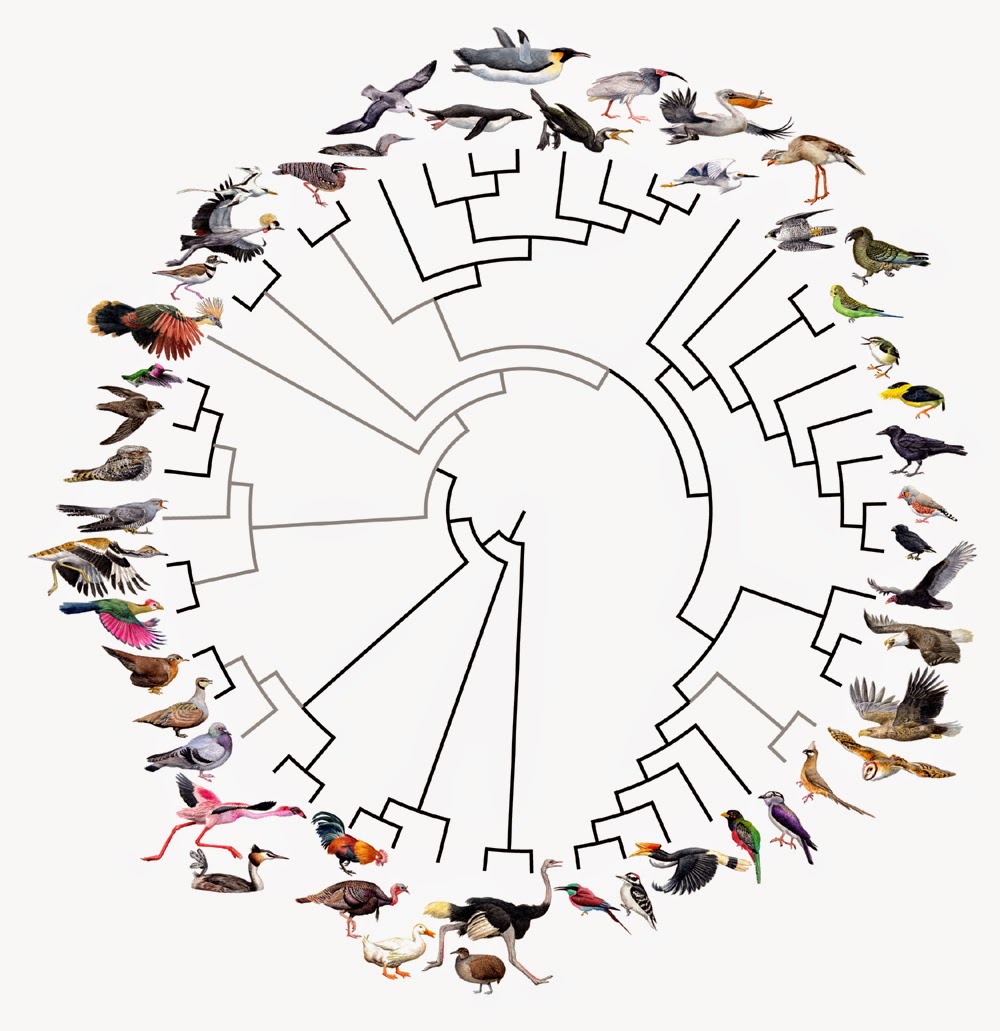
The most ambitious genetic study ever undertaken on bird evolution has found that almost all modern birds diversified after the dinosaurs became extinct 66 million years ago.
“The popular view until now has been that the extraordinary diversity of birds began during the dinosaur age but we found little support for this,” said Associate Professor Simon Ho, from the University of Sydney who led a major component of the research looking at evolutionary timescale.
An international collaboration of scientists worked for four years to sequence, assemble and compare the full genomes of 48 bird species representing all major branches of modern birds. It is the largest whole genomic study across a single vertebrate class ever undertaken.
Their results appear in a special edition of Science on 12 December (with simultaneous publications of related articles in other high profile journals).
Associate Professor Ho, from the University’s School of Biological Sciences, is an author on a Science paper and two articles in GigaScience. He contributed his expertise in using a technique known as ‘molecular clock’ analysis to estimate birds’ evolutionary timescales, using genome data and fossil evidence.
His research helped confirm that some of the first lineages of modern birds appeared about 100 million years ago but that almost all of the modern groups of birds diversified in a small window of less than 10 million years, just after the dinosaurs were wiped out by an asteroid.
“Our team had to develop a range of new methods to handle the largest bird data set ever assembled. These required the equivalent of more than 400 years of computing power across nine supercomputers,” said Associate Professor Ho.
“The team was able to work out the relationships among the major groups of modern birds, showing that our previous understanding of birds had been clouded by the appearance of similar traits and habits in distantly related groups.
“So while grebes and cormorants are both waterbirds with webbed feet that dive to catch their prey they are, despite these similarities, from completely distinct lineages.”
Another significant finding is that the ancestor of most of the land birds we see today is probably an apex predator that gave rise to raptors, eagles, owls and falcons in rapid succession before leading to land birds such as songbirds and woodpeckers.
“With the demise of the dinosaurs, birds and mammals were able to become more diverse and to occupy all of the niches that had previously been dominated by dinosaurs,” said Associate Professor Simon Ho.
“This was one of the most significant episodes in the history of life on earth and it is tremendously exciting that this major scientific international effort has made these advances in our understanding,” said Associate Professor Simon Ho.
Note : The above story is based on materials provided by University of Sydney.










